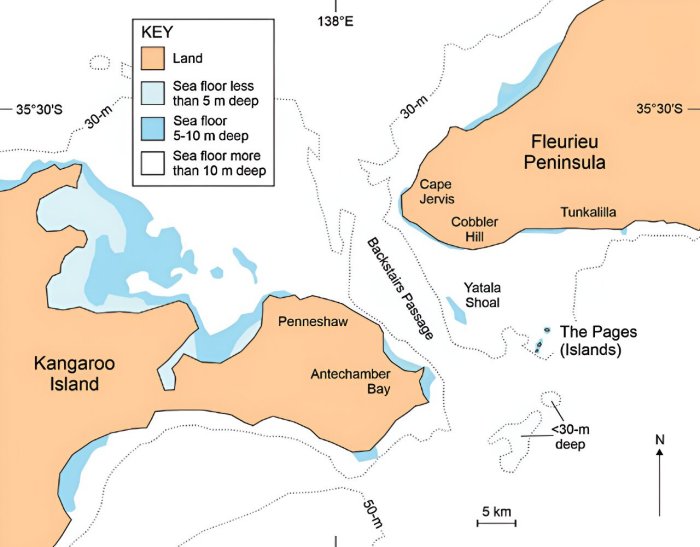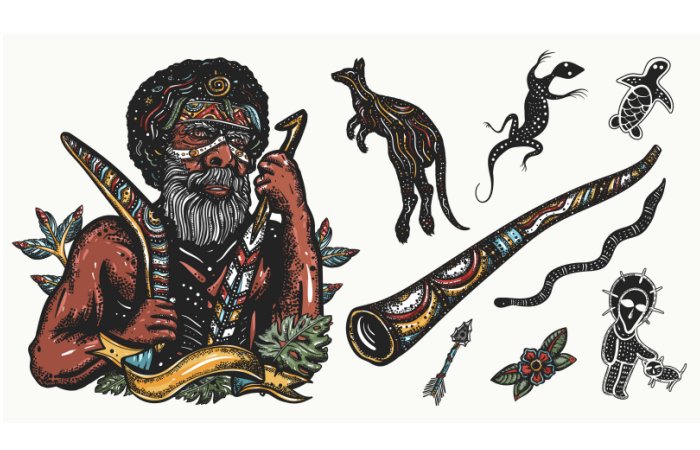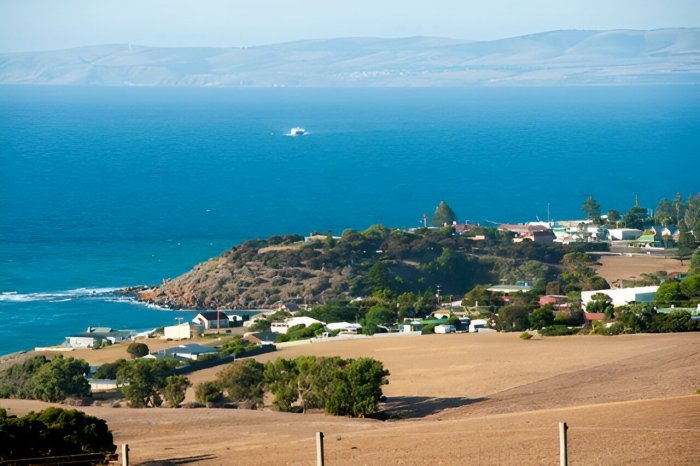Jan Bartek – AncientPages.com – In 1970, Lardil man Goobalathaldin (or Dick Roughsey) completed his autobiography “Moon and Rainbow” in which he recounted his ancestors’ stories. Among them was a story telling of a time when the North Wellesley Islands were connected to the Australian mainland.
Modern estimates put the last time the North Wellesley Islands were connected to the mainland to at least 10,000 years ago.

Sea levels surrounding Kangaroo Island and Fleurieu Peninsula. Credit: University of the Sunshine Coast
Professor Patrick Nunn from UniSC’s Sustainability Research Center believes this is but one example in a growing body of evidence, that suggests the oral stories of First Nations Australia stretch back further than almost anywhere else in the world.
“I think we’ve got credible examples of knowledge in Australia that has been pᴀssed down orally across almost 400 generations to reach us today,” Professor Nunn said.
Professor Nunn is a geographer and geologist whose recent work has explored how stories from First Nations people around the world might offer clues to an area’s geographical past. Take Lake Eacham in North Queensland, which formed from a volcanic eruption more than 9,000 years ago.
“Long before geologists came along and worked out its origins, there were stories from local Indigenous groups that told of two men who broke their laws—with devastating consequences,” Professor Nunn said.
But perhaps the most apparent clues to the incredible longevity of Indigenous Australians’ storytelling are in submergence stories.
Accounts recalling the rising sea levels that followed the last ice age.
Several years ago, Professor Nunn started working with linguistics expert ᴀssociate Professor Nick Reid from the University of New England to collect these submergence stories and date them according to the sea levels reported within.
Stories like that of Ngurunderi from South Australia, an ancestral figure whose two wives ran away from him: “He pursued them along the south coast of the Fleurieu Peninsula, finally catching sight of them as they were crossing a strip of land connecting it to Kangaroo Island across Backstairs Pᴀssage. Infuriated, he caused the sea to rise and drown them and the women and their belongings became the islands known as The Pages. The sea never receded again.”

Credit: Adobe Stock – intueri
“The ocean there is around 30–35m deep. We have calculated the last time it would have been possible to walk from the Fleurieu Peninsula across to Kangaroo Island was 10,100 years ago. That’s the kind of antiquity we’re talking about,” Professor Nunn said.
“I’ve been working with archaeologists from Flinders University and the local Ngarrindjeri people to collect all the different versions of it.
“I think it’s absolutely awesome that people are still telling a story today has been pᴀssed down for 99% of that time by word of mouth, rather than being written down. It’s a living story.”
So far, Professor Nunn and Dr. Reid have pieced together more 30 submergence stories from all corners of Australia’s coastline, painting a picture of an ancient and vastly different Australia.
“My colleague at UniSC, Dr. Adrian McCallum, has a project which is looking at stories of when K’gari was still connected to the mainland and people could walk across,” Professor Nunn said.
“If you go north, lots of stories exist about times when the Great Barrier Reef was dry land and people walked out to the edge of it.
“That must have been at least 10,000–11,000 years ago.”
A story of survival
While Australia is by no means the only country with an ancient oral history, Professor Nunn believes it has a claim to being the oldest.
“For almost 70,000 years the continent and the people living here were essentially isolated. With almost no outside groups to dilute them, Australia had close to the best conditions for keeping these stories alive,” Professor Nunn said.
Australia’s geography has allowed these stories to survive in the mouths, memories, songs, and art of its people.
But the reverse is also true.

Looking at the Fleurieu Peninsula from Kangaroo Island Credit: University of the Sunshine Coast
These stories also helped the people telling them to survive in one of the most unforgiving landscapes on earth.
In 1957, anthropologist Donald Thompson spend several weeks with the Pintupi people in the Central Desert, where he became interested in an elaborately decorated spear-thrower (lankurru).
The same applies to the knowledge contained in the oral stories.
See also: More Archaeology News
“Our ancestors thousands of years ago didn’t just make up stories for fun. They were intended as ways of sharing information,” Professor Nunn said.
“If you wanted your bloodline to survive, you had to pᴀss on that knowledge down the line so that the next time a flood does come along—there’s a story about how to survive it.”
“We can look at so-called ancient myths and legends and we can find meaning in them. That’s important. It’s relevant not only to our understanding of the past, but of the future.”
Written by Jan Bartek – AncientPages.com Staff





